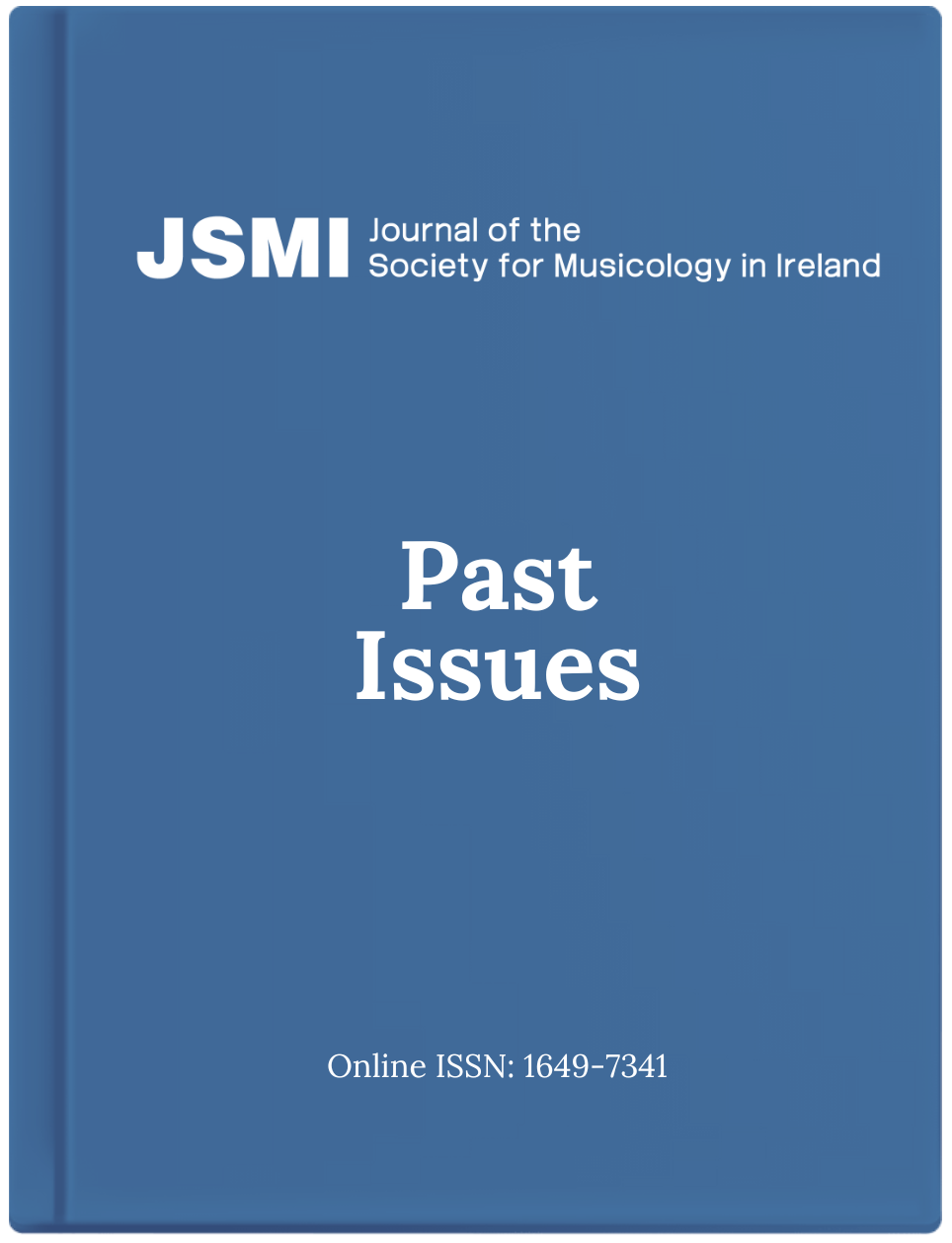The Hibernian Catch Club: Catch and Glee Culture in Georgian and Victorian Dublin
DOI:
https://doi.org/10.35561/JSMI13172Keywords:
Catch and Glee Culture, Eighteenth-Century Dublin, Nineteenth-Century Dublin, Vocal RepertoireAbstract
The Hibernian Catch Club was the leading Irish club of its kind, setting the standard in terms of performance. It gained status as Dublin’s longest-standing music society, and must be credited with pioneering catch and glee culture in Ireland. Its existence appears to pre-date the foundation of the most renowned London catch and glee clubs, emphasizing its significance within the wider context of catch and glee culture. This article examines the contribution that the Hibernian Catch Club made to musical life in Georgian and Victorian Dublin, contextualizing how the Club’s activities and membership reflect aspects of Dublin’s wider social, political and cultural life during this period. The extent to which the Club reflects the traditions associated with the culture as established in England is evaluated, before the discussion turns to an exploration of the repertoire. The Hibernian Catch Club was part of a wide performing network, its singers possessing established connections with musical, social and religious organizations in Dublin, London and provincial England. The Hibernians engaged with and maintained the traditions associated with the culture (singing, dining and conviviality) while also representing the social and cultural partnership formed between Dublin’s amateur and professional musicians. Its singers, dominated by vicars choral, represent the religious and social divisions evident in private music-making circles in late-eighteenth and nineteenth-century Dublin. In fact, social, religious and musical exclusivity were inherent in its profile and are reflected by the overall lack of change in its aims and outlook. The Club’s activities and repertoire are comparable with those of the London and provincial English catch and glee clubs, illustrating the strong cultural connections between Britain and Ireland.
Downloads
Published
Issue
Section
License
Copyright for articles and reviews published in this journal is retained by the authors, with first publication rights granted to the journal. By virtue of their appearance in this open access journal, articles are free to be used, with proper attribution, in educational and other non-commercial settings.
It is the responsibility of the author to secure (and, if necessary, pay for) written copyright permissions for the reproduction, in this online journal, of any illustrations, images, music notation, audio and video files, or any other copyright materials, that are included in the author's article.



